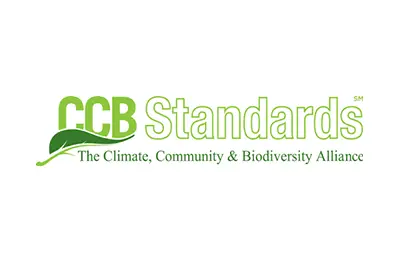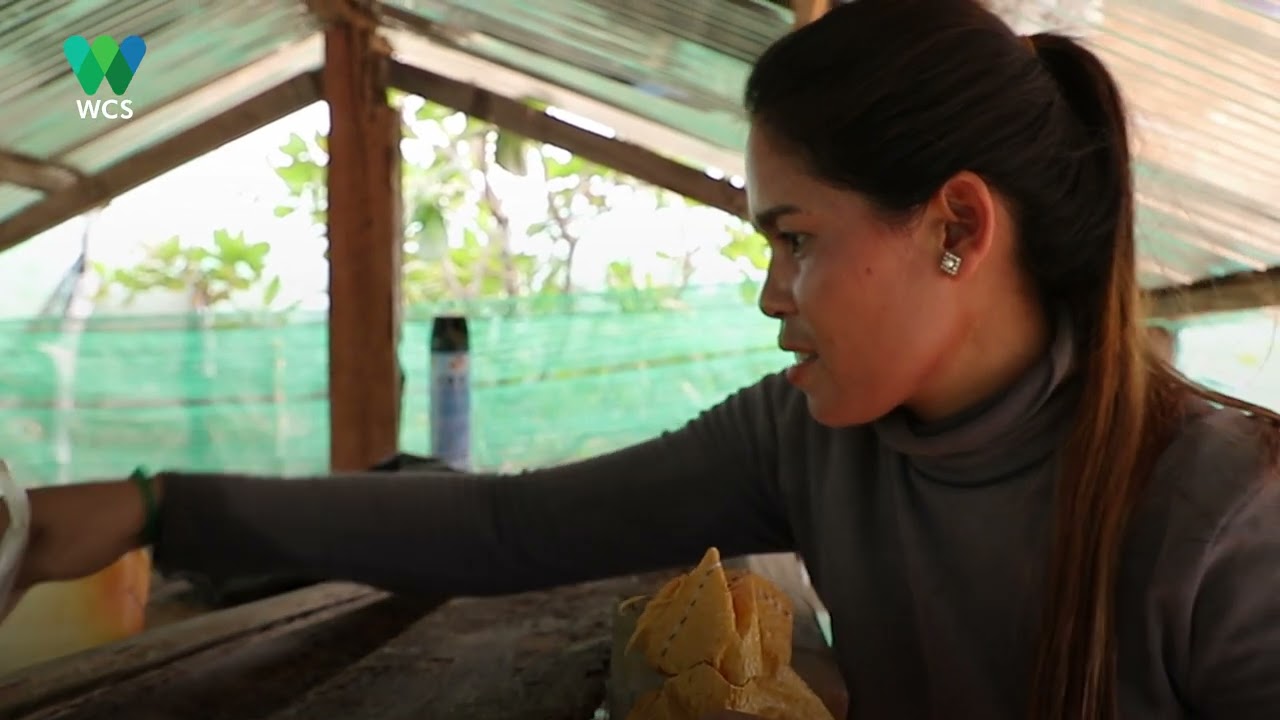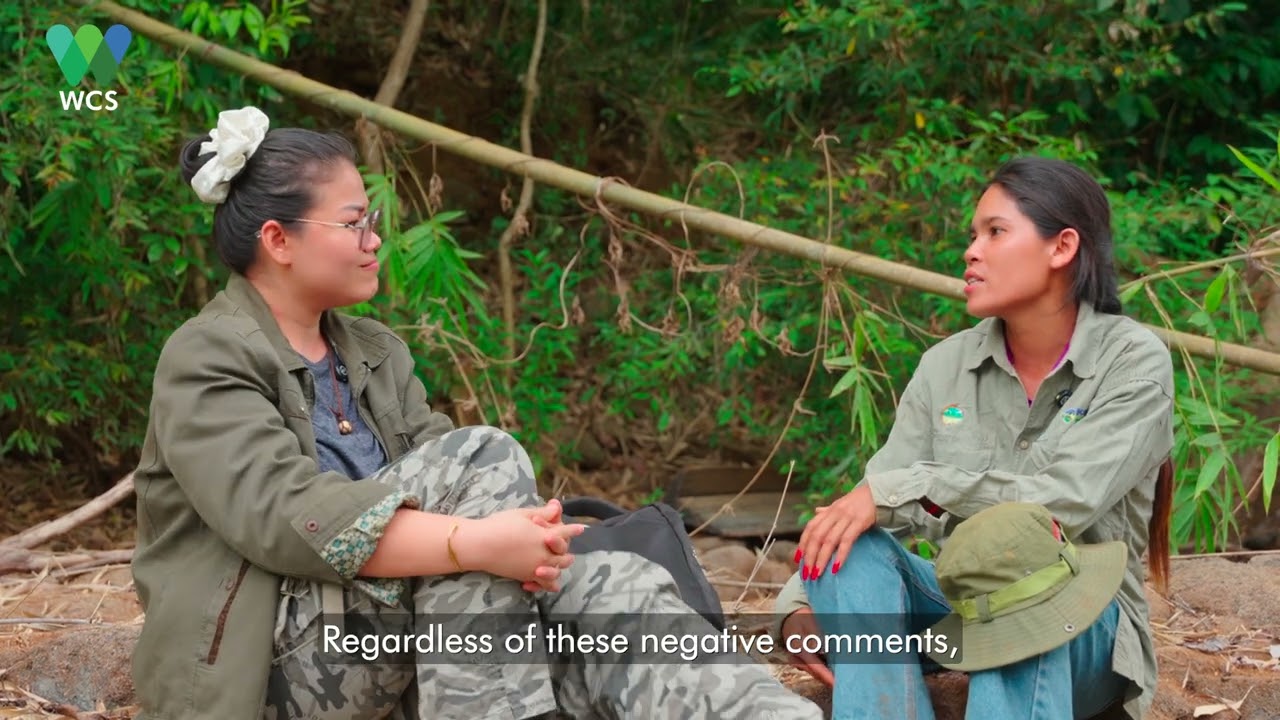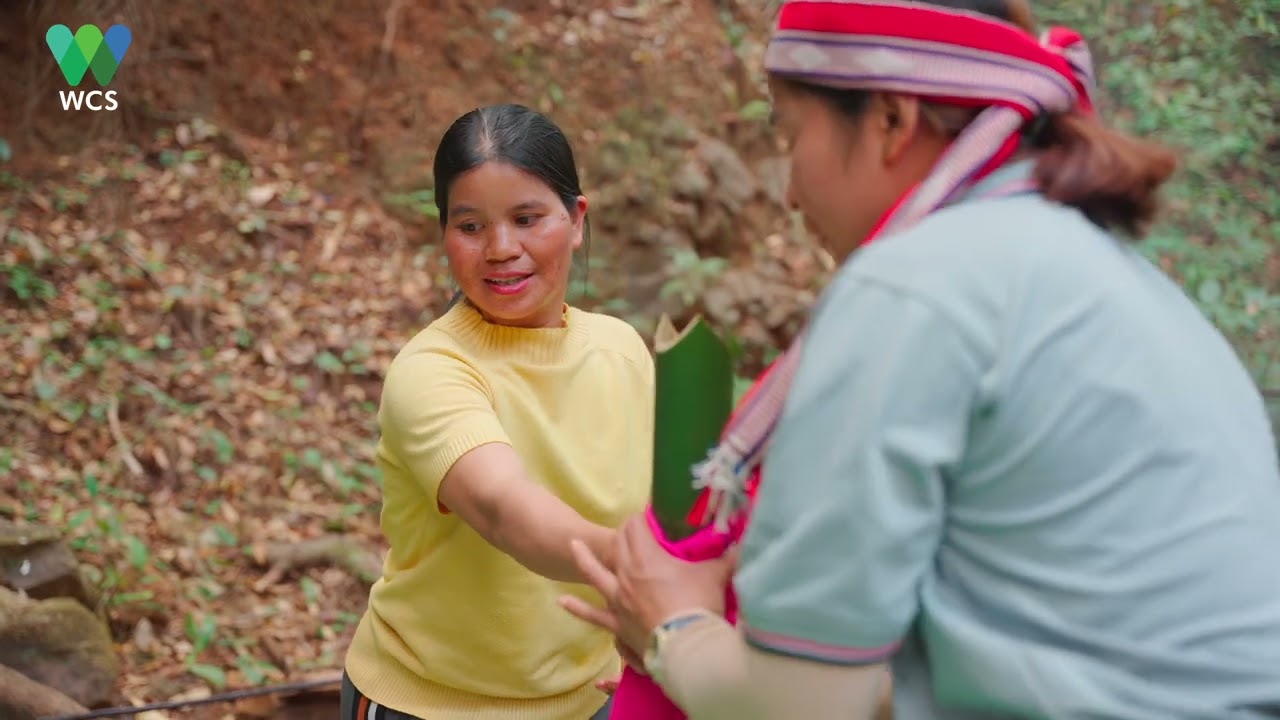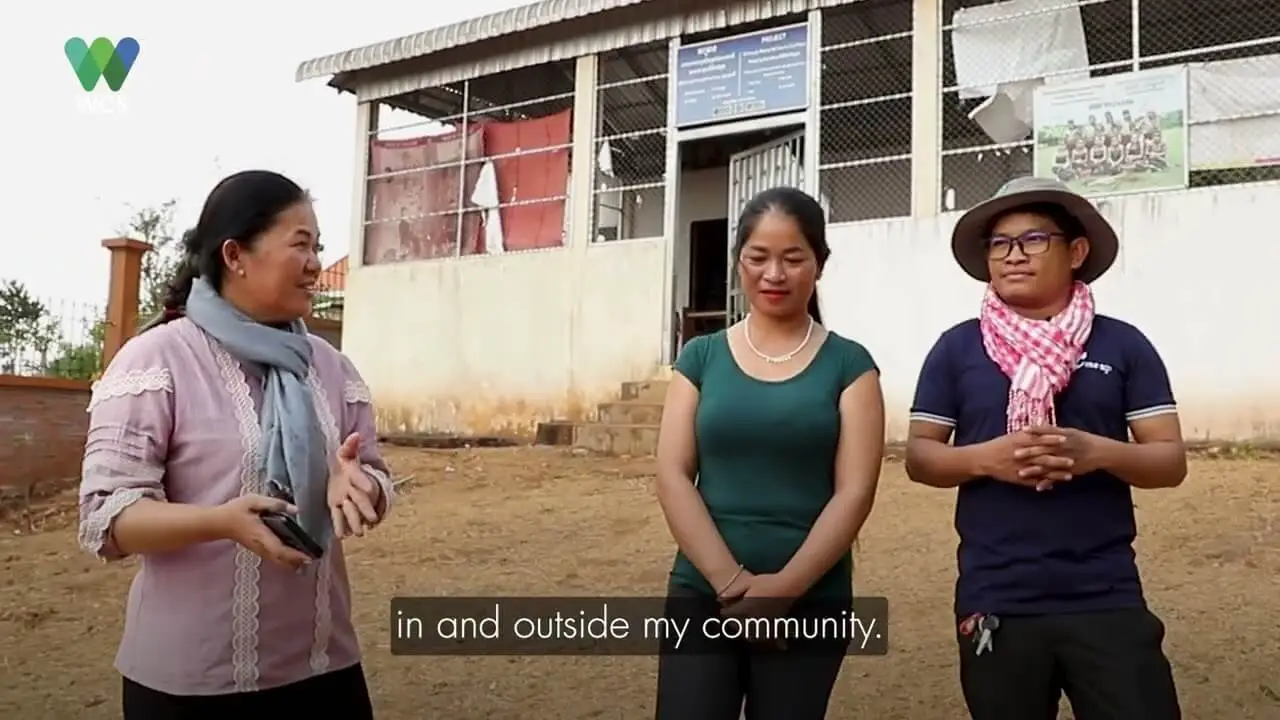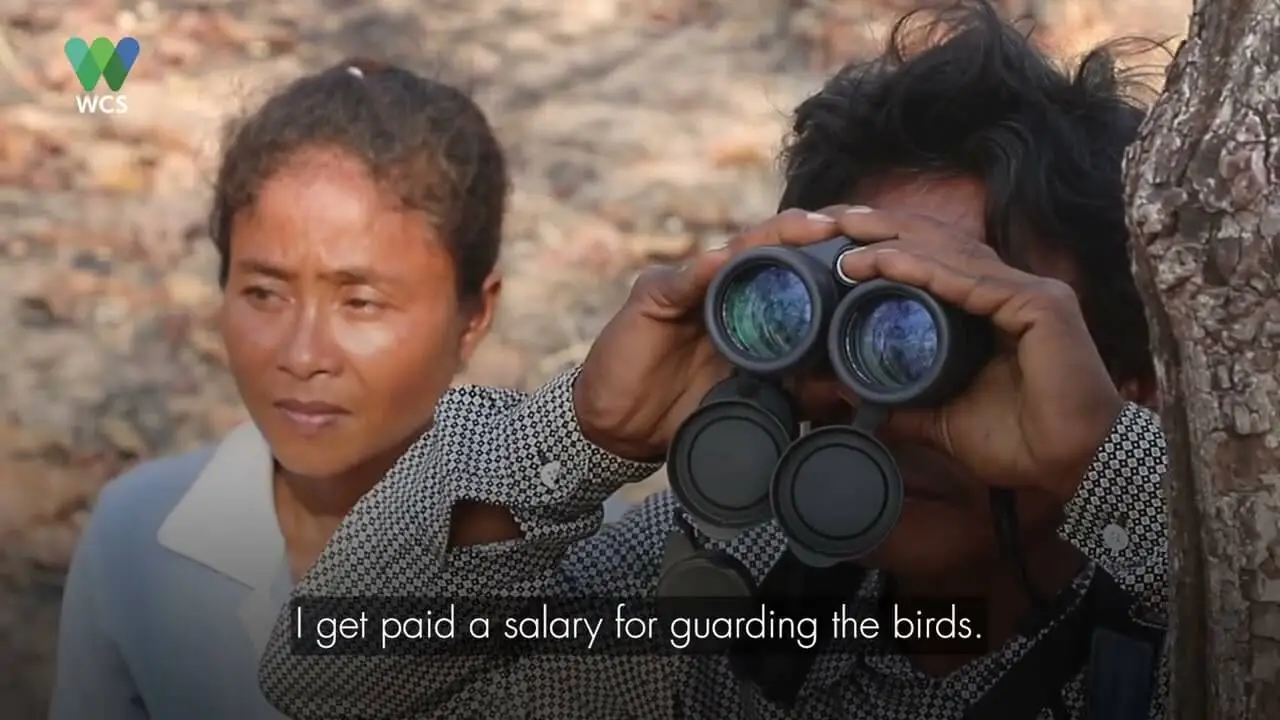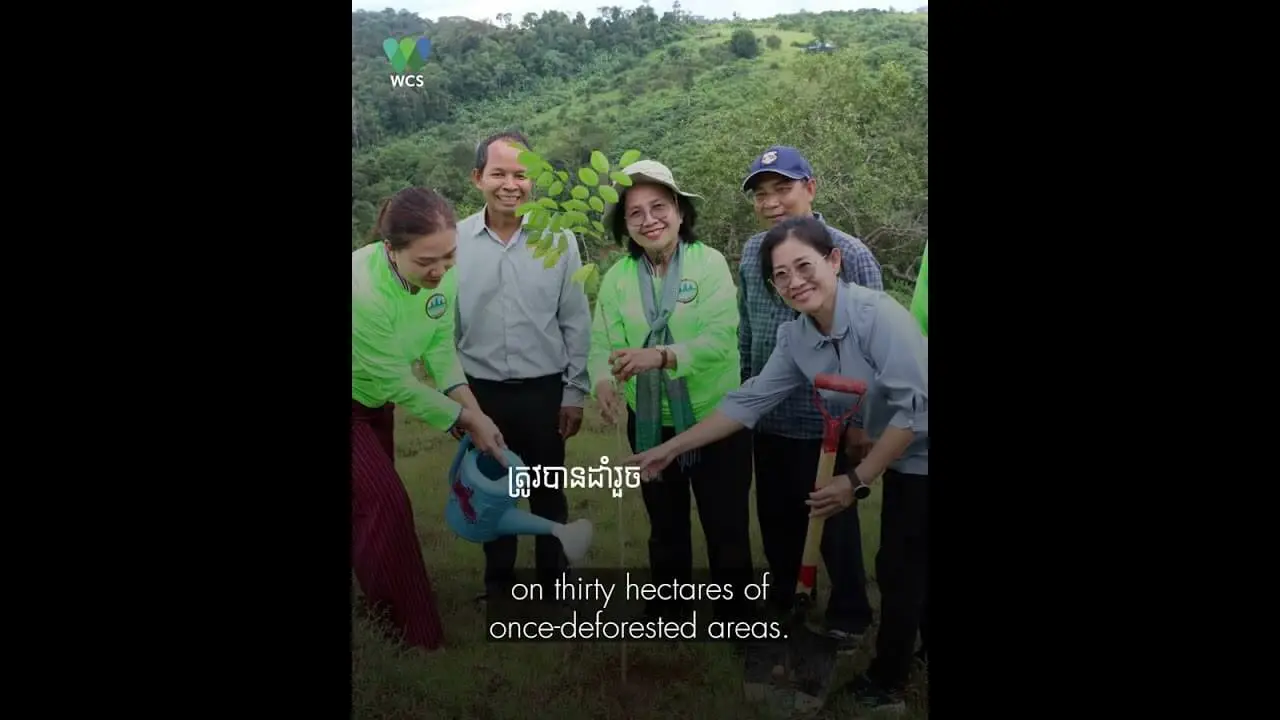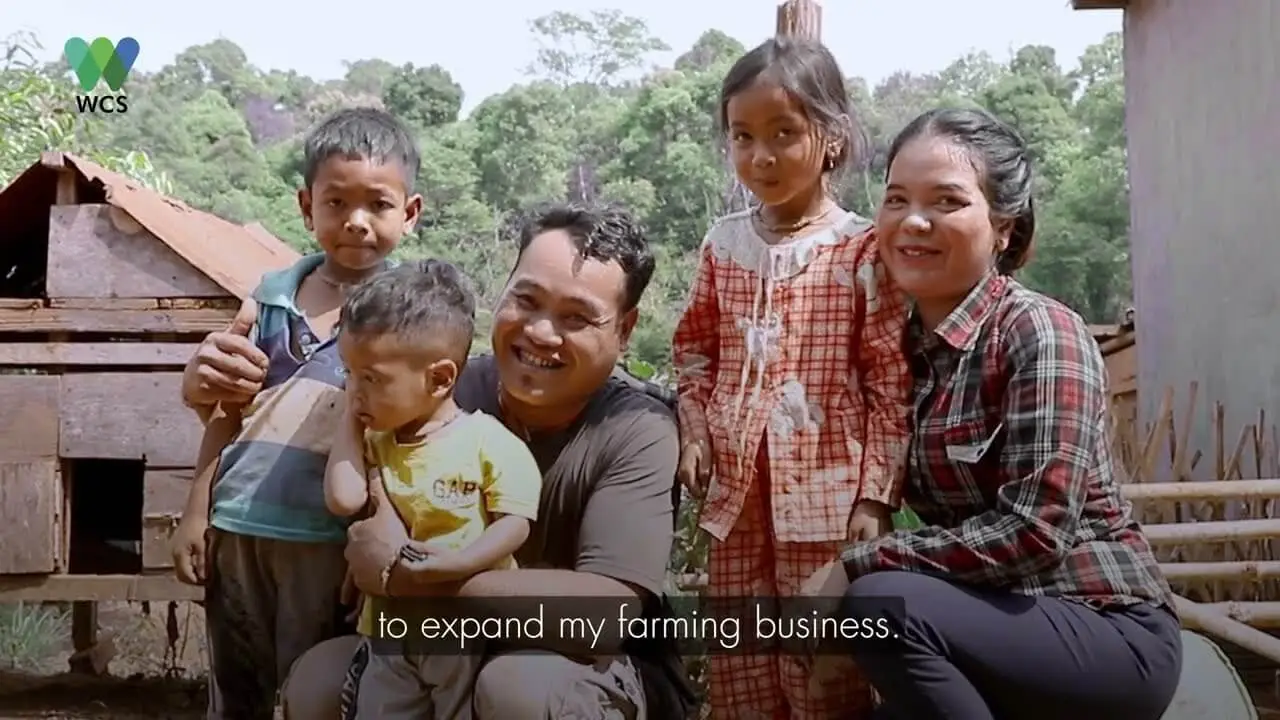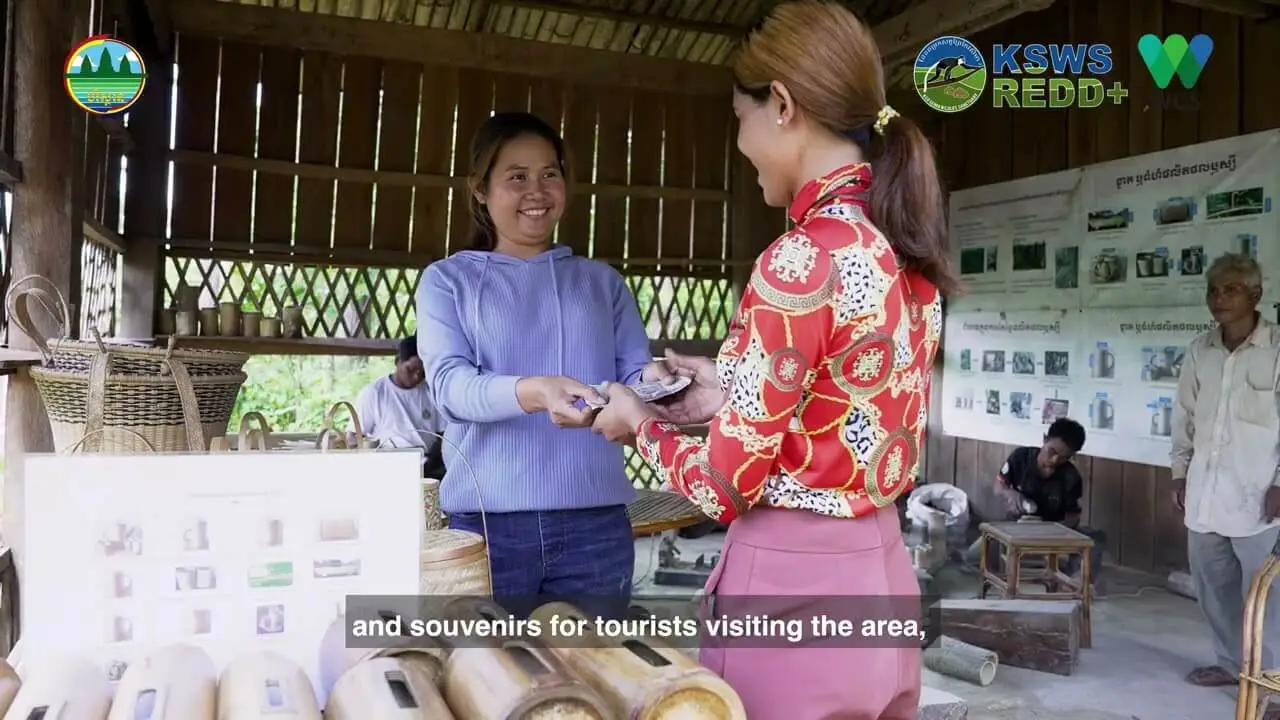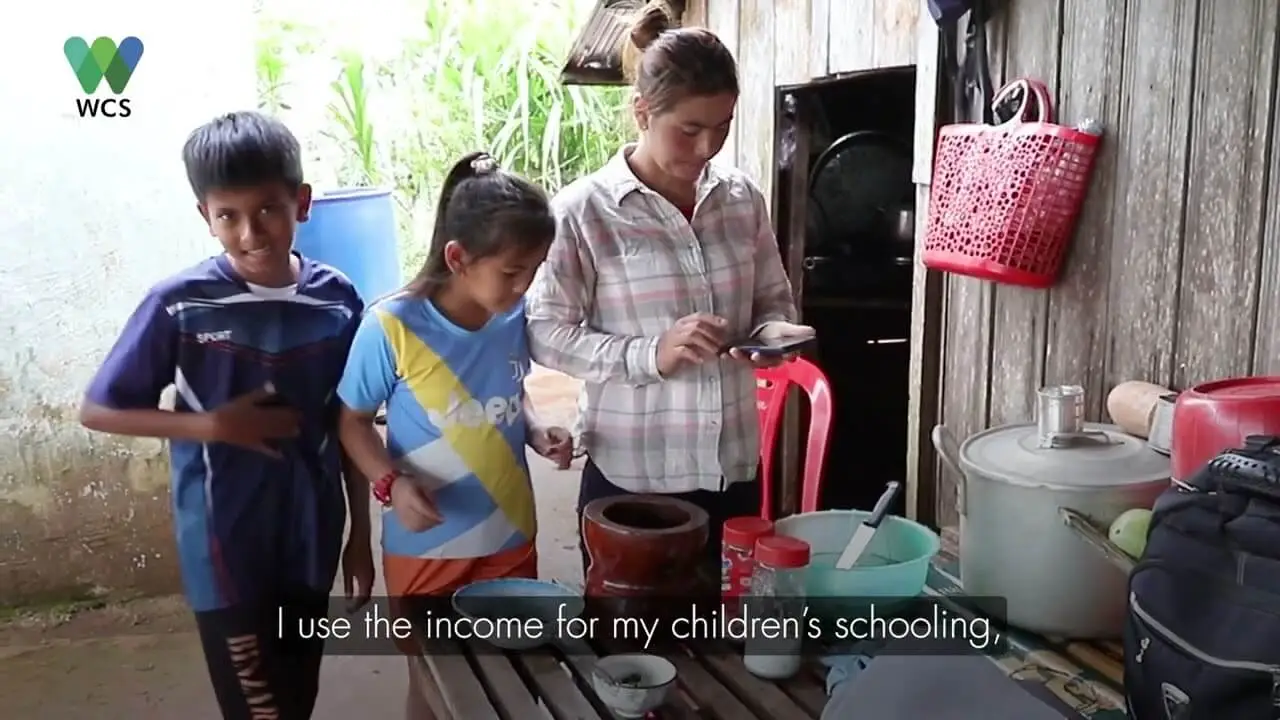This project conserves a large section of tropical forest that holds significant cultural, spiritual, and economic value to the Indigenous Bunong people. The Keo Seima Wildlife Sanctuary protects this area from unsustainable farming and logging and addresses social issues that drive communities to extractive practices. Along with safeguarding tree species that cannot be found anywhere else on the planet, the sanctuary provides a refuge for endangered species like the yellow-cheeked gibbon and impedes wildlife trafficking. The project promotes climate-smart farming practices and engages communities in sustainable livelihoods, reducing the need to clear forests and poach rare species while cutting emissions from deforestation. Along with creating new community enterprises and income generation opportunities, the project addresses issues like hunger, poverty, and lack of access to education.
Where & Why
Eastern Cambodia’s forests are a biodiversity hotspot, home to over 1,000 species of plants, animals, and fungi. The lush rainforests, evergreen forests, bamboo forests, and tropical dry forests shelter 13 critically endangered and 27 endangered species. This includes black-shanked doucs, yellow-cheeked crested gibbons, Asian elephants, and Cambodia’s national bird, the giant ibis.
The Indigenous Bunong people have lived in harmony with Cambodia’s forests for millennia, maintaining traditional lifestyles that preserve the balance of their natural environment. In Bunong culture, every plant and animal is believed to possess a spirit that should be honored and respected. This deep connection to the natural world drives their approach to resource use. They are careful to take only what they need, clearing small areas of land to cultivate rice and tapping trees to extract resin, which is sold in nearby towns. These sustainable practices allow the forest to regenerate and provide for future generations.
Decades of civil conflict in Cambodia created a large wealth gap and many rural communities live in extreme poverty with limited access to healthy food, clean water, and other necessities. Most rural residents rely on agriculture for their livelihoods, with rice the most cultivated crop and a path to food security for many. From 2004 to 2012, agricultural growth was pivotal in lifting four million Cambodians out of poverty.
As the country rebuilds its economy, rapid development encroaches on rural areas, leading to land grabbing and the displacement of local communities. In 2010, the government began granting Economic Land Concessions (ELCs) to foreign companies, allowing them to develop large plantations for cash crops like rubber, cassava, and cashews. Indigenous communities were stripped of the land essential for their livelihoods and forced to leave their ancestral homes. Although they were offered plantation work, the wages were meager and insufficient to compensate for their loss. These new plantations enticed desperate migrants from other provinces willing to take low-paying jobs, exacerbating pressure on the ecosystem as the landless migrants cleared land for housing and subsistence farming.
Increasing economic security led many community members to seek out supplemental income from the logging industry, which paid high sums for rare tree species. The region’s proximity to the Vietnam border enables an unchecked rare wood and exotic animal trafficking industry. Poachers and illegal loggers sneak into Cambodia, harvesting timber and catching animals to bring back to Vietnam where they are sold as delicacies or used for medicine. Black market pet traders trap endangered species like gibbons, selling them as exotic pets to buyers around the world. In addition to rare animals, Cambodia’s eastern forests have a high concentration of luxury wood tree species, which fetch a steep price in nearby countries. Luxury wood prices have risen by 200-600%, motivating a spike in illegal logging in the area, and weak law enforcement makes it difficult to catch these criminals before significant damage is done.
Agricultural expansion and illegal logging caused the loss of nearly a third (29.5%) of Cambodia’s forests over the past two decades. Even government-managed protected areas were not immune to deforestation, as sections of sanctuaries were sold to developers under the ELCs. The Snoul Wildlife Sanctuary near the Vietnam border lost nearly all its forest cover in just 15 years due to commercial plantations, unchecked logging, and small-scale farming. Without enough forest for wildlife to survive, the sanctuary was officially dissolved in 2018. Cambodia currently has the highest annual deforestation rate in the world, warranting the protection of forests before it is too late.
As Cambodia’s forest diminishes, the animals that depend on it for survival will also disappear. The population of yellow-cheeked crested gibbons in the region has already decreased by at least half in the last 45 years. Vulnerable animals are not the only ones affected. Local Bunong communities are losing access to sacred lands, farms, and resources, often without their consent. This perpetuates the cycle of deforestation as displaced community members are forced to leave behind their cultural beliefs, resorting to illegal logging and hunting to make ends meet. When the forest around villages is cleared, communities can no longer make money, pushing them into severe poverty.
Families who opted to continue producing rice needed to double their yield to make the same profit and feed their families. Traditionally, rice is cultivated during the wet season when fields naturally flood, but farmers began manually flooding their fields during the dry season to grow rice without rainfall. Without a steady replacement of fresh water during the growing season, the rice paddies stagnate in the hot sun, releasing methane and accelerating global warming.
How & Who
In 2002, the Cambodian government established a legally protected area to safeguard a vast tract of forest in Eastern Cambodia, adjacent to the Snoul Wildlife Sanctuary. To ensure this area didn’t meet the same fate as the Snoul landscape, the Keo Seima carbon offset project was established in 2010 to enhance its protection. This project protects over 412,000 acres (166,000 hectares) of forest in what is now known as the Keo Seima Wildlife Sanctuary, providing communities with the legal and financial support to stand against land grabs.
Even with the sanctuary established, the threats of illegal logging, wildlife poaching, and agricultural development remain. The project combats these threats by establishing a law enforcement program with community-led forest patrols. The project has constructed several ranger camps, trained local rangers, and equipped them with technology like GPS systems to navigate the forest effectively. Additionally, the project aims to minimize the need for enforcement in the first place by clearly defining what activities are permitted in different areas, designating some areas strictly for conservation and others for community uses.
Since Keo Seima is a state-owned protected area, the Bunong people must navigate an extensive process to formalize their customary land rights. This starts with gaining temporary rights to manage the land and use its resources, ultimately leading to the securement of long-term land titles. The project has successfully assisted seven Indigenous communities in obtaining official land rights and is currently supporting eight more communities applying for their titles. The project has secured more Indigenous Communal Land Titles than any other project or organization in Cambodia. By helping the Bunong gain legal rights to their lands, the project enables them to legally provide for their families and also empowers them to defend and steward the forest.
Along with defending Keo Seima’s land and animals against intruders, the project addresses the root causes of community-based deforestation in local villages: poverty and a lack of sustainable income-generating opportunities. The project trains local communities on sustainable small-scale agriculture techniques that require less land, preserve soil nutrients more effectively than cash crop cultivation, and increase food security. Locals receive supplies to plant vegetables and raise livestock, providing their families with extra income and homegrown food. To reduce the need for dry-season rice farming, the project pays local farmers 40% above the market rate for rice grown in the wet season on the condition that they refrain from planting rice once their paddies naturally dry up. To date, 1,500 farmers have benefited from this initiative.
Illegal logging and wildlife trafficking entice Bunong youth with the promise of quick, substantial earnings. To combat this problem and provide an alternative income stream, the project established a gibbon-focused ecolodge to attract visitors. Project managers train locals to become tour guides, cooks, and housekeeping staff, helping the lodge run smoothly. Ninety percent of the fees from the ecolodge stays benefit community members and contribute to gibbon conservation initiatives like scientific research projects. Just a few miles away, an elephant sanctuary employs Bunong youth, offering skills training and a career opportunity that involves caring for animals rather than reducing wildlife populations. Elephants rescued from captivity roam freely in the sanctuary, where visiting tourists can observe the elephants in their natural habitat but are forbidden from interacting with them.
Beyond the employment opportunities listed above, the project creates alternative livelihoods to provide communities with sustainable income streams. Training programs for bamboo craftsmanship, weaving, and motorbike repair help locals build businesses that do not destroy forest resources. Finance management classes provide these new enterprises with the necessary know-how to ensure they are profitable in the long term.
Along with supporting new income generation opportunities, the project also improves local quality of life by:
- Dispatching mobile healthcare units to increase access to enhanced medical and maternal care
- Constructing wells and piped water infrastructure to provide clean water to over 2,000 families
- Building bridges and irrigation infrastructure to improve access to communities during the rainy season
- Improving education efforts by supplying books, funding scholarships, and renovating school buildings
- Constructing community gathering spaces for cultural events and local government meetings
- Providing aquaculture supplies and training to local families
- Offering training courses in salon services, motorbike repair, and restaurant operations
- Creating community nurseries to reforest degraded areas
To date, the project has provided more than $2 million USD of direct cash payments to community-led projects.
By maintaining the wildlife sanctuary and tackling the social issues driving deforestation and wildlife trafficking, the Keo Seima project safeguards Cambodia’s biodiversity and mitigates climate change. At the same time, it helps the Bunong people to maintain their relationship with the environment while enhancing their overall quality of life.
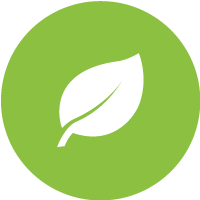
Environmental Benefits
- Mitigates climate change by protecting over 412,000 acres (166,000 hectares) of forest and preventing the deforestation of 61,776 (25,000) hectares to date
- Protects a biodiverse wildlife habitat that is home to 85 globally threatened species
- Maintains soil nutrients
- Safeguards plants and animals from poaching and illegal trafficking
- Restores degraded forest areas

Community Benefits
- Helps indigenous communities attain formal ownership of their customary lands and strengthen the management of their existing lands.
- Empowers communities to access alternative income streams by offering skills-building and advanced education and developing new livelihood opportunities.
- Increases local food security
- Improves community health and well-being by expanding access to clean water and healthcare
- Preserves forest resources that are integral to Indigenous communities’ cultural and spiritual life
- Improves education in local schools
Project Type

Forests
Location
Cambodia
Annual CO2 Reduction
1,426,648 metric tons CO2e (expected annual average for crediting period)
SDGs Supported
Verification Standard
Project Proponent
Royal Government of Cambodia
Project Developers
Wildlife Conservation Society Cambodia
Project Documents
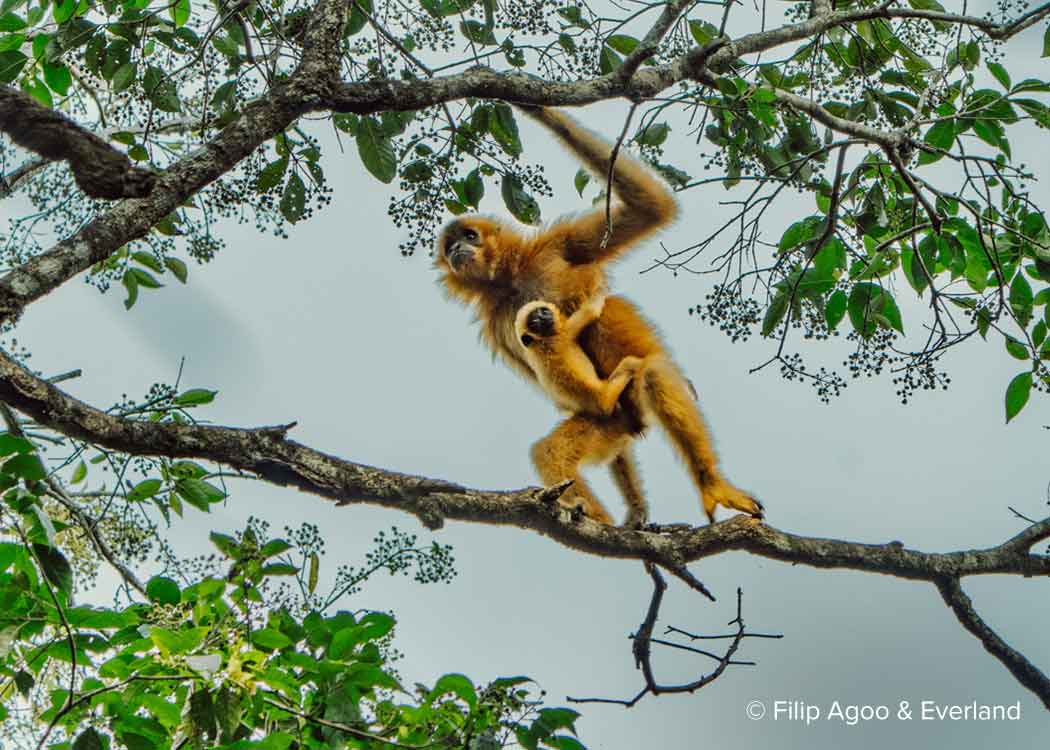
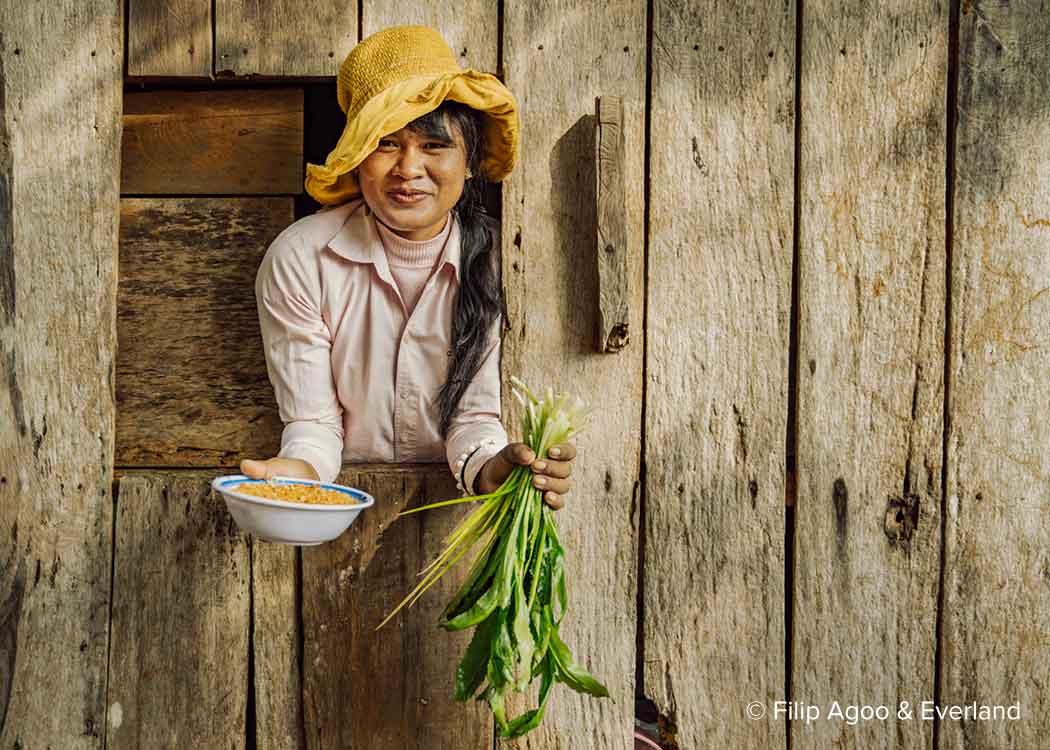
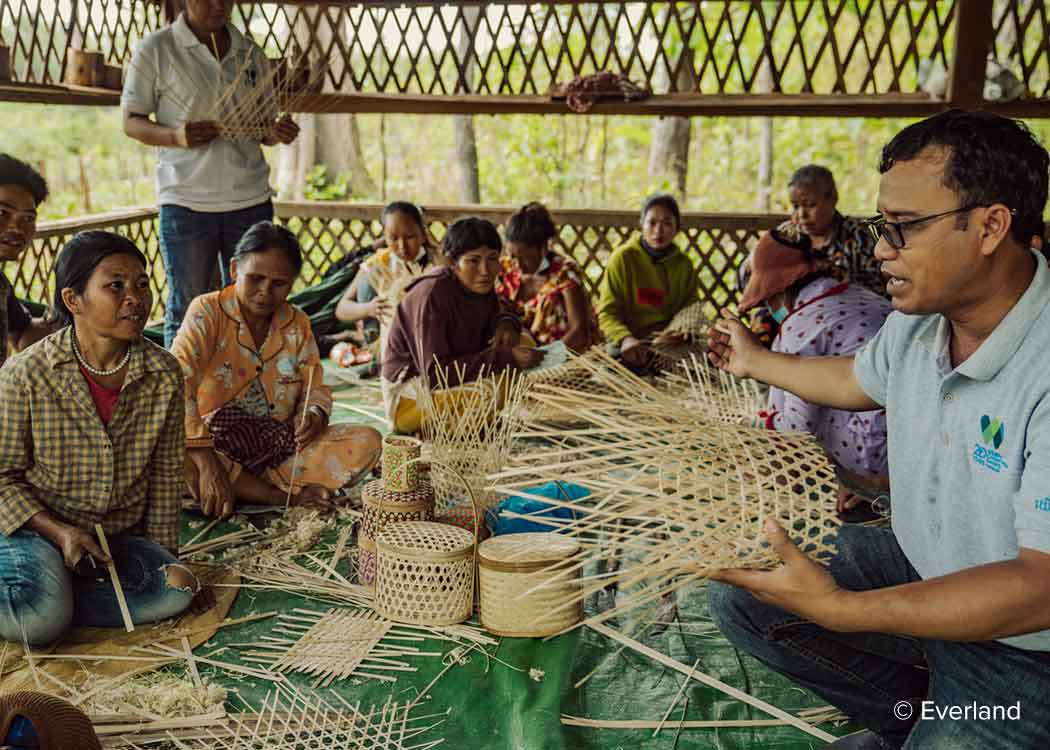
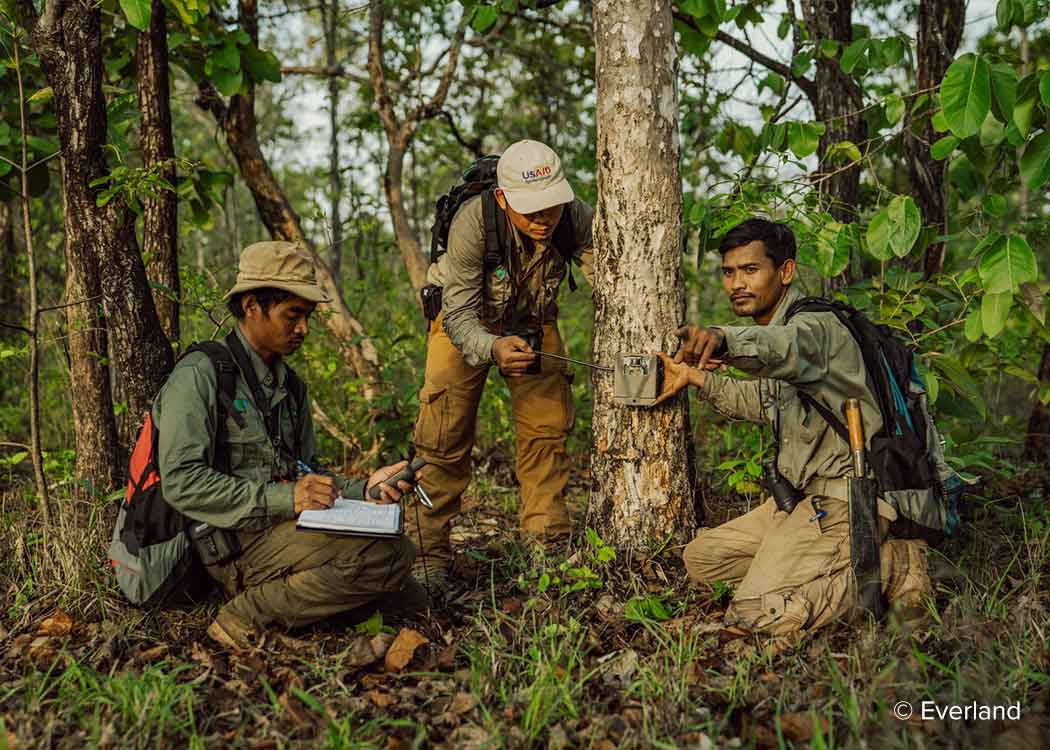
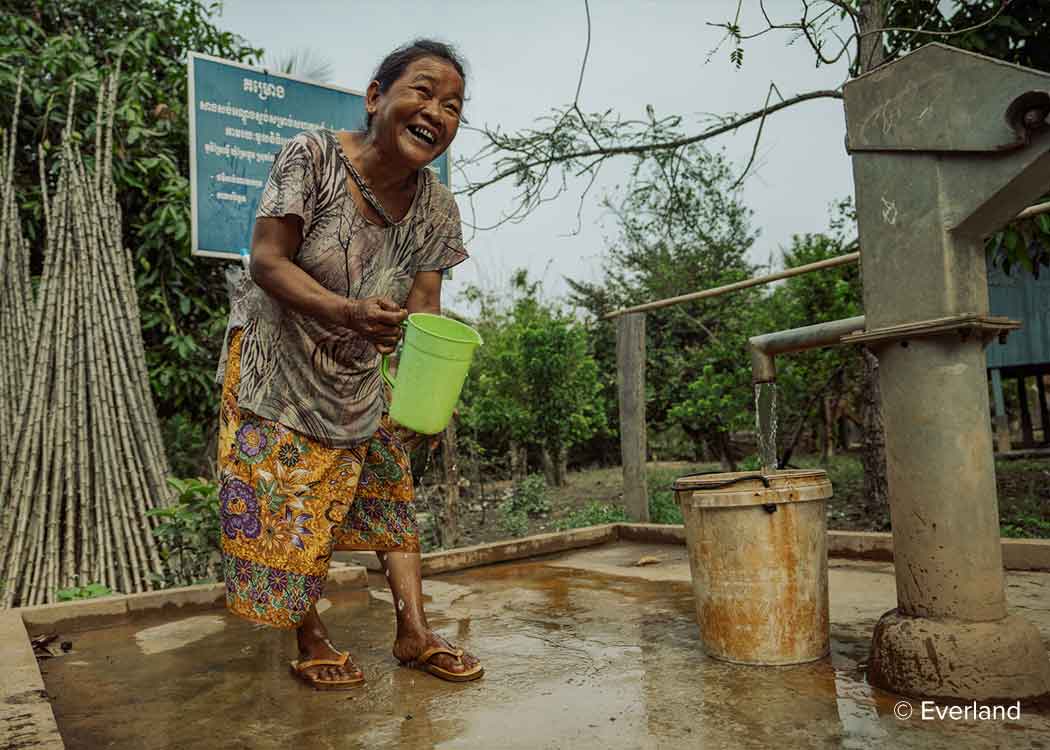
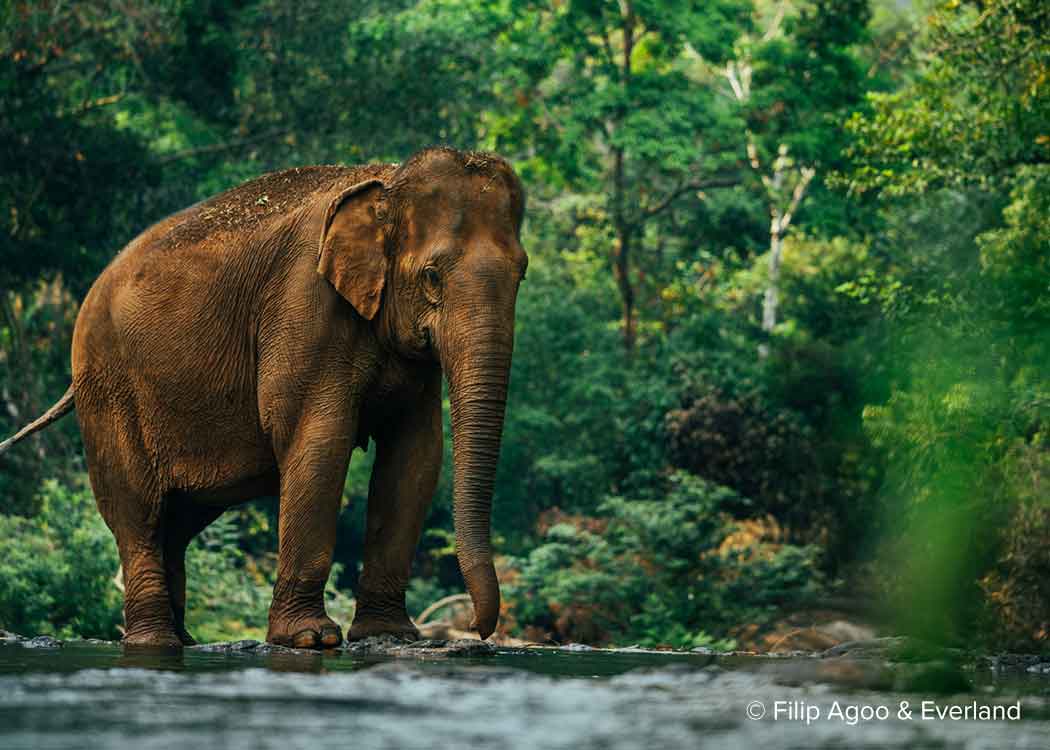
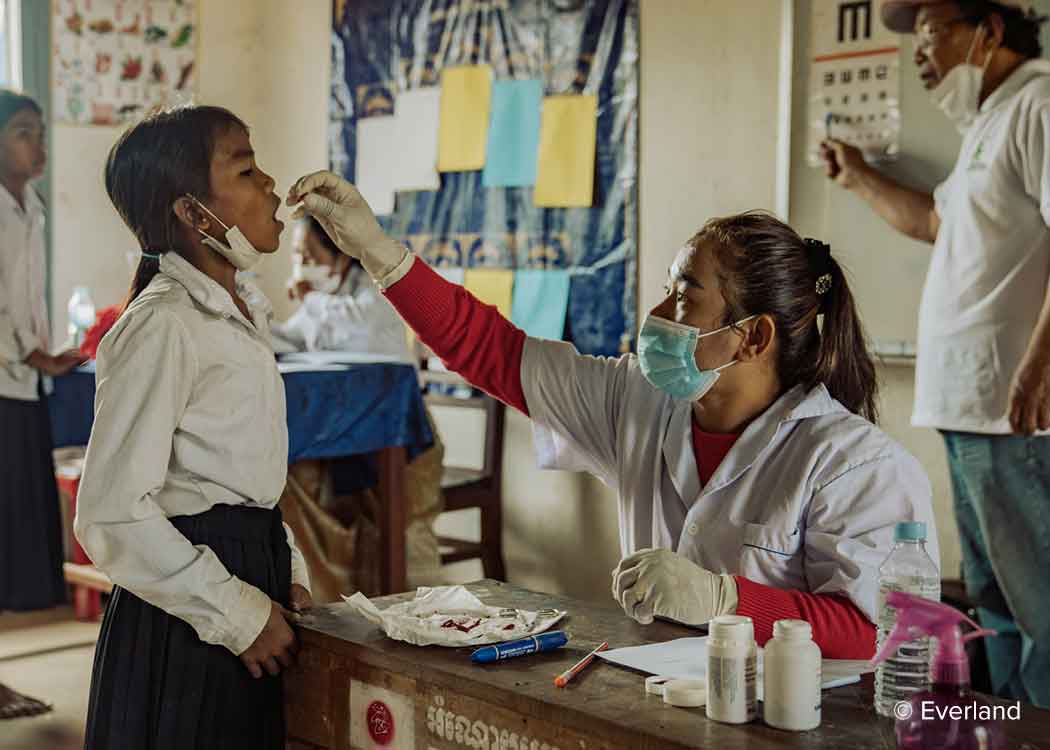
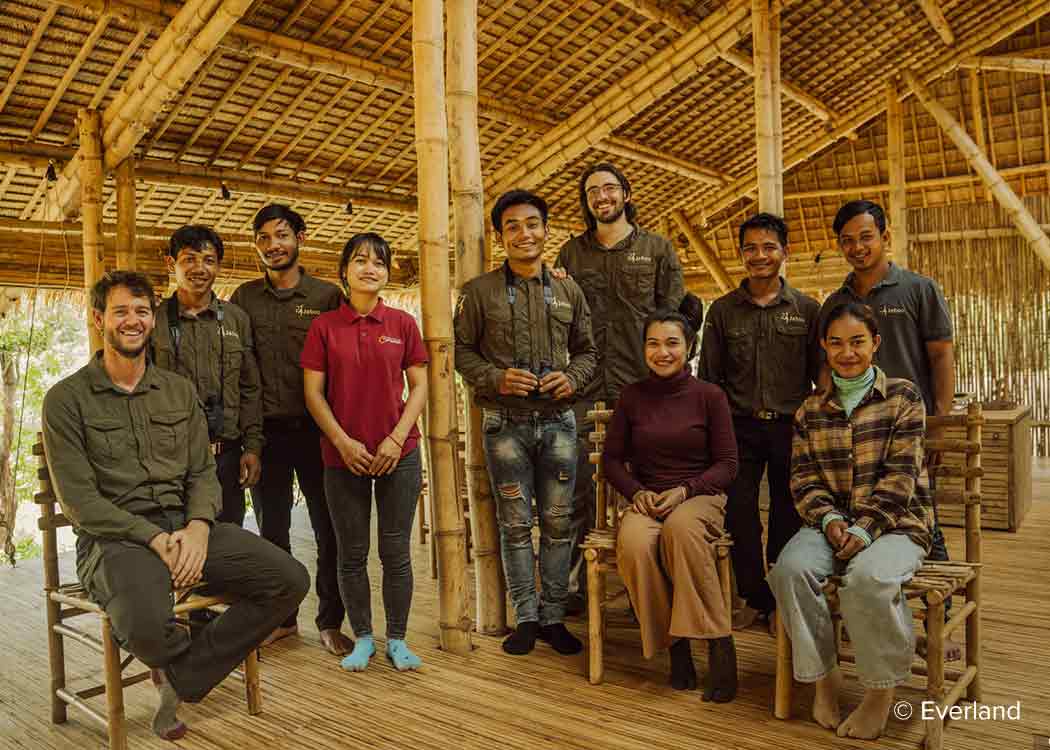
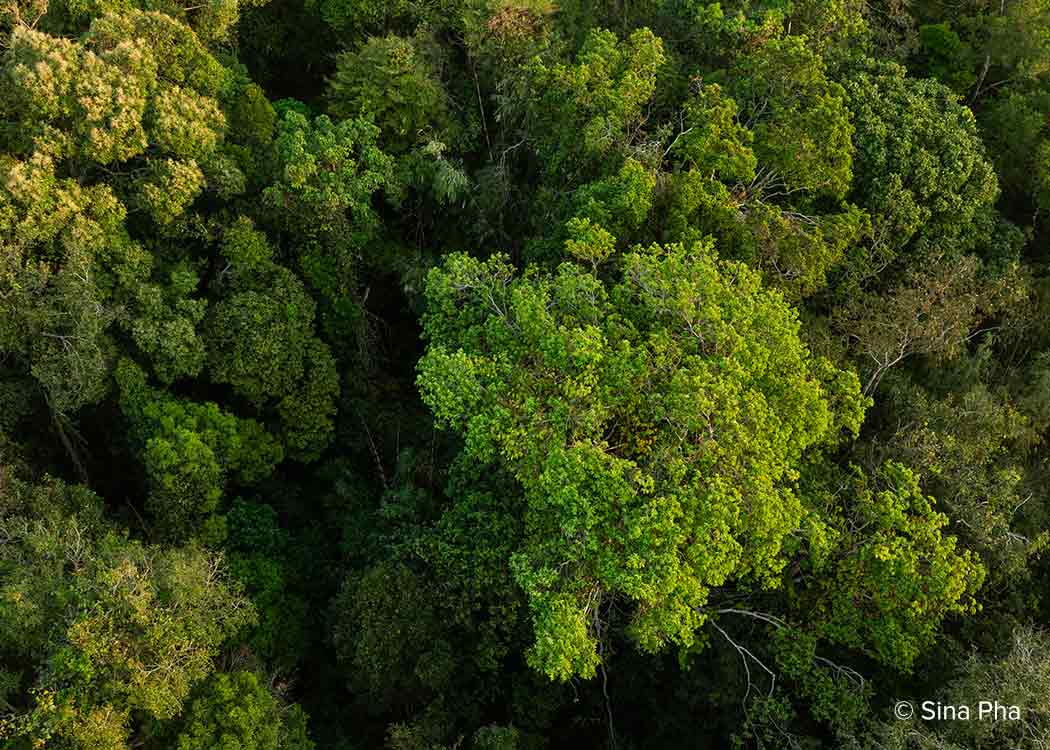
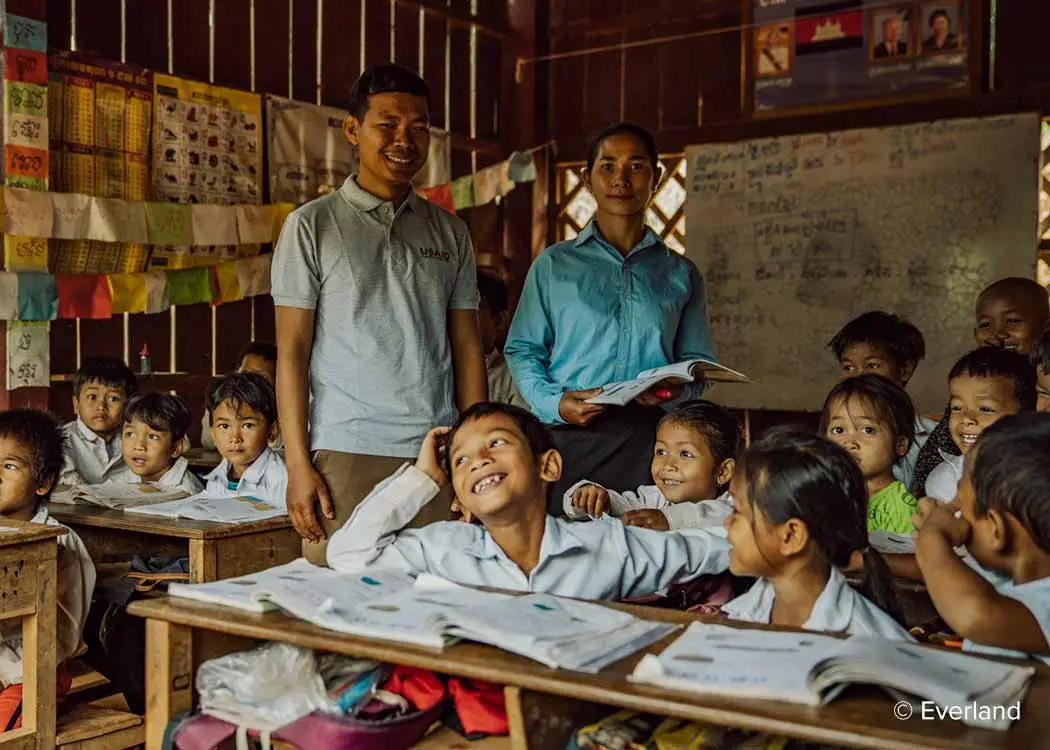
Related Travel Experiences
These immersive experiences offer a firsthand opportunity to participate in project activities, explore local challenges, and see the real-world results on the ground.
Elephant Valley Project
The Elephant Valley Project is the largest elephant sanctuary in the region where rescued elephants roam in 1,500 hectares of protected forest, living free from rides or performances. Visitors can observe the elephants from afar and join guided treks to learn more about Asian elephant history, behaviors, and conservation efforts. This experience also offers insight into the Indigenous Bunong, who are economically supported through employment at the sanctuary.
For those seeking a deeper connection, volunteer opportunities allow participants to assist with trail maintenance, reforestation, and other conservation projects. Guests can stay in jungle bungalows where they will wake up to the sounds of gibbons calling across the valley. By supporting eco-tourism, the project provides sustainable livelihoods while protecting the elephants and the forest.

Jahoo Gibbon Camp
At Jahoo Gibbon Camp, visitors can hear and possibly spot the unique gibbons and other primates within the Keo Seima Wildlife Sanctuary. Guided by Bunong forest custodians, visitors can embark on guided treks to track wild gibbons, explore the jungle at night to observe nocturnal wildlife, and participate in other eco-programs. The camp provides opportunities for immersion in the Indigenous forest culture, from foraging and cooking a traditional Bunong meal to hearing legends around a campfire and experiencing ancient sustainable practices like resin tapping. Visitors stay in a bamboo camp constructed from sustainably sourced materials and inspired by Bunong design. By providing alternative livelihoods in eco-tourism, the camp reduces reliance on illegal logging and hunting, helping to protect the Bunong ancestral forests and cultural heritage.

News & Stories
Offset your Travel Footprint
Calculate and offset the carbon footprint of your flight in seconds via our online carbon calculator. Already know your carbon footprint? Click the option to “offset now.”











